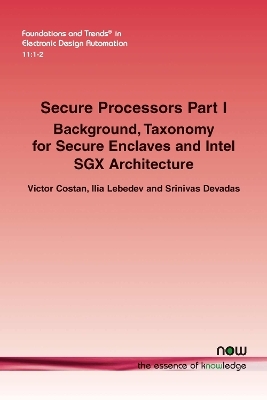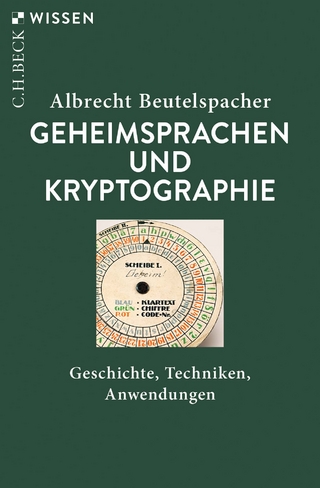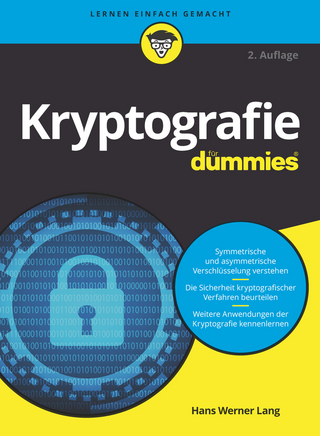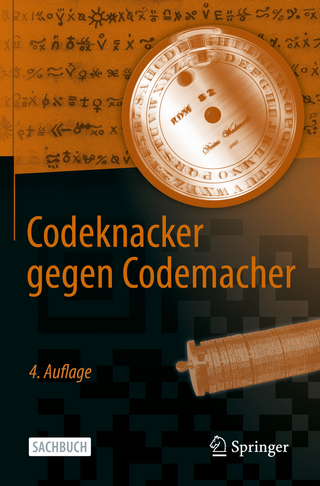
Secure Processors Part I
Background, Taxonomy for Secure Enclaves and Intel SGX Architecture
Seiten
2017
now publishers Inc (Verlag)
978-1-68083-300-3 (ISBN)
now publishers Inc (Verlag)
978-1-68083-300-3 (ISBN)
Surveys the state of the art in secure processor systems, with a specific focus on remote software attestation and software isolation. The book examines the relevant concepts in computer architecture and cryptography, and then surveys attack vectors and existing processor systems claiming security for remote computation and/or software isolation.
This monograph is the first in a two-part survey and analysis of the state of the art in secure processor systems, with a specific focus on remote software attestation and software isolation. It first examines the relevant concepts in computer architecture and cryptography, and then surveys attack vectors and existing processor systems claiming security for remote computation and/or software isolation. It examines, in detail, the modern isolation container (enclave) primitive as a means to minimize trusted software given practical trusted hardware and reasonable performance overhead. Specifically, this work examines the programming model and software design considerations of Intel’s Software Guard Extensions (SGX), as it is an available and documented enclave-capable system. This work advocates a principled, transparent, and well-scrutinized approach to secure system design, and argues that practical guarantees of privacy and integrity for remote computation are achievable at a reasonable design cost and performance overhead. See also: Secure Processors Part II: Intel SGX Security Analysis and MIT Sanctum Architecture Part II (ISBN 978-1-68083-302-7). Part II of this survey a deep dive into the implementation and security evaluation of two modern enclave-capable secure processor systems: SGX and MIT’s Sanctum. The complex but insufficient threat model employed by SGX motivates Sanctum, which achieves stronger security guarantees under software attacks with an equivalent programming model.
This monograph is the first in a two-part survey and analysis of the state of the art in secure processor systems, with a specific focus on remote software attestation and software isolation. It first examines the relevant concepts in computer architecture and cryptography, and then surveys attack vectors and existing processor systems claiming security for remote computation and/or software isolation. It examines, in detail, the modern isolation container (enclave) primitive as a means to minimize trusted software given practical trusted hardware and reasonable performance overhead. Specifically, this work examines the programming model and software design considerations of Intel’s Software Guard Extensions (SGX), as it is an available and documented enclave-capable system. This work advocates a principled, transparent, and well-scrutinized approach to secure system design, and argues that practical guarantees of privacy and integrity for remote computation are achievable at a reasonable design cost and performance overhead. See also: Secure Processors Part II: Intel SGX Security Analysis and MIT Sanctum Architecture Part II (ISBN 978-1-68083-302-7). Part II of this survey a deep dive into the implementation and security evaluation of two modern enclave-capable secure processor systems: SGX and MIT’s Sanctum. The complex but insufficient threat model employed by SGX motivates Sanctum, which achieves stronger security guarantees under software attacks with an equivalent programming model.
1: Introduction; 2: A Primer on Computer System Architecture; 3: A Primer on Security for Trusted Processors; 4: A Survey of Secure Processors; 5: The Software Isolation Container (As Exemplified by Intel’s SGX) 6: Conclusion; 7: Acknowledgements; References.
| Erscheinungsdatum | 21.07.2017 |
|---|---|
| Reihe/Serie | Foundations and Trends in Electronic Design Automation |
| Verlagsort | Hanover |
| Sprache | englisch |
| Themenwelt | Informatik ► Theorie / Studium ► Kryptologie |
| Technik ► Maschinenbau | |
| ISBN-10 | 1-68083-300-6 / 1680833006 |
| ISBN-13 | 978-1-68083-300-3 / 9781680833003 |
| Zustand | Neuware |
| Haben Sie eine Frage zum Produkt? |
Mehr entdecken
aus dem Bereich
aus dem Bereich
Geschichte, Techniken, Anwendungen
Buch | Softcover (2022)
C.H.Beck (Verlag)
9,95 €
Die faszinierende Geschichte der Verschlüsselung
Buch | Softcover (2022)
Springer (Verlag)
34,99 €


